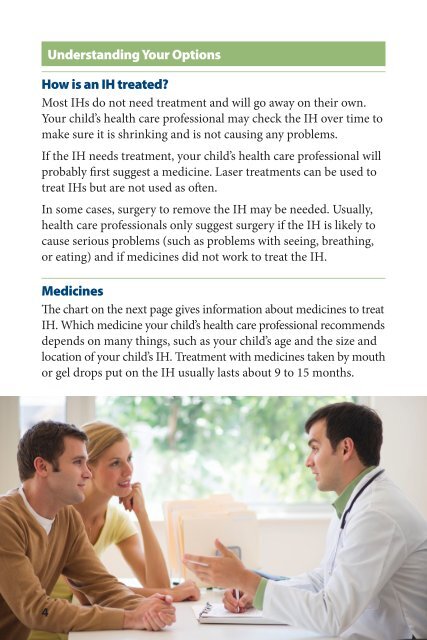Treating Infantile Hemangiomas in Children
PubMedHealth_PMH0088999
PubMedHealth_PMH0088999
You also want an ePaper? Increase the reach of your titles
YUMPU automatically turns print PDFs into web optimized ePapers that Google loves.
Understand<strong>in</strong>g Your Options<br />
How is an IH treated?<br />
Most IHs do not need treatment and will go away on their own.<br />
Your child’s health care professional may check the IH over time to<br />
make sure it is shr<strong>in</strong>k<strong>in</strong>g and is not caus<strong>in</strong>g any problems.<br />
If the IH needs treatment, your child’s health care professional will<br />
probably first suggest a medic<strong>in</strong>e. Laser treatments can be used to<br />
treat IHs but are not used as often.<br />
In some cases, surgery to remove the IH may be needed. Usually,<br />
health care professionals only suggest surgery if the IH is likely to<br />
cause serious problems (such as problems with see<strong>in</strong>g, breath<strong>in</strong>g,<br />
or eat<strong>in</strong>g) and if medic<strong>in</strong>es did not work to treat the IH.<br />
Medic<strong>in</strong>es<br />
The chart on the next page gives <strong>in</strong>formation about medic<strong>in</strong>es to treat<br />
IH. Which medic<strong>in</strong>e your child’s health care professional recommends<br />
depends on many th<strong>in</strong>gs, such as your child’s age and the size and<br />
location of your child’s IH. Treatment with medic<strong>in</strong>es taken by mouth<br />
or gel drops put on the IH usually lasts about 9 to 15 months.<br />
4



